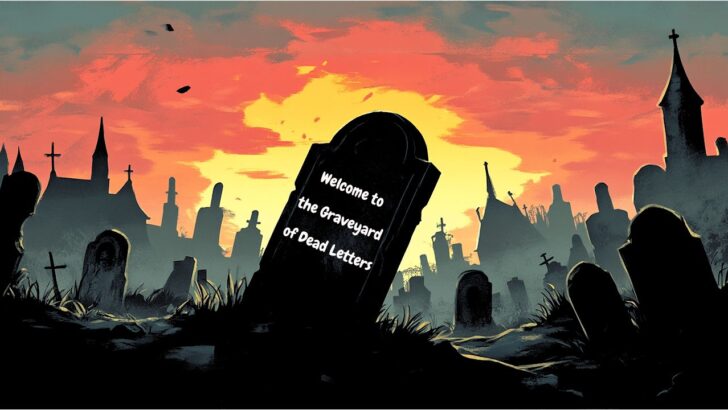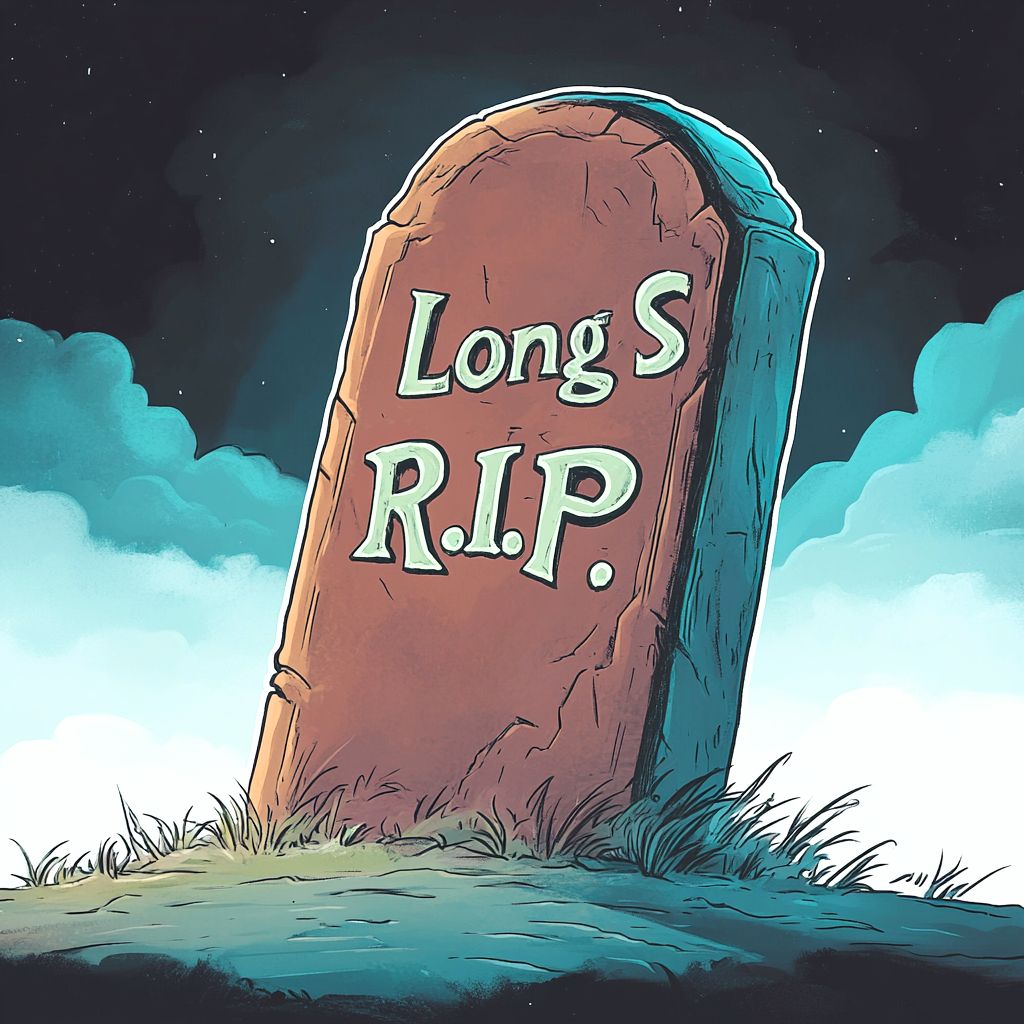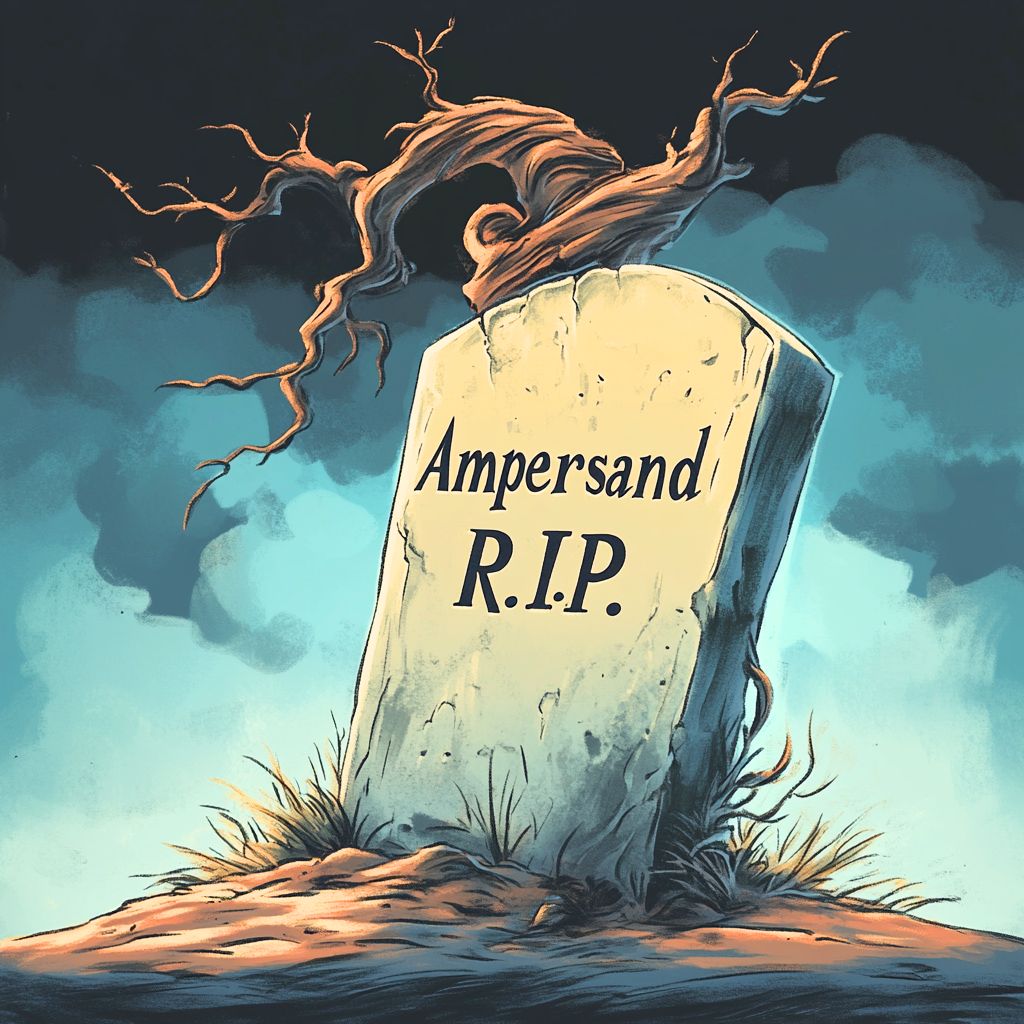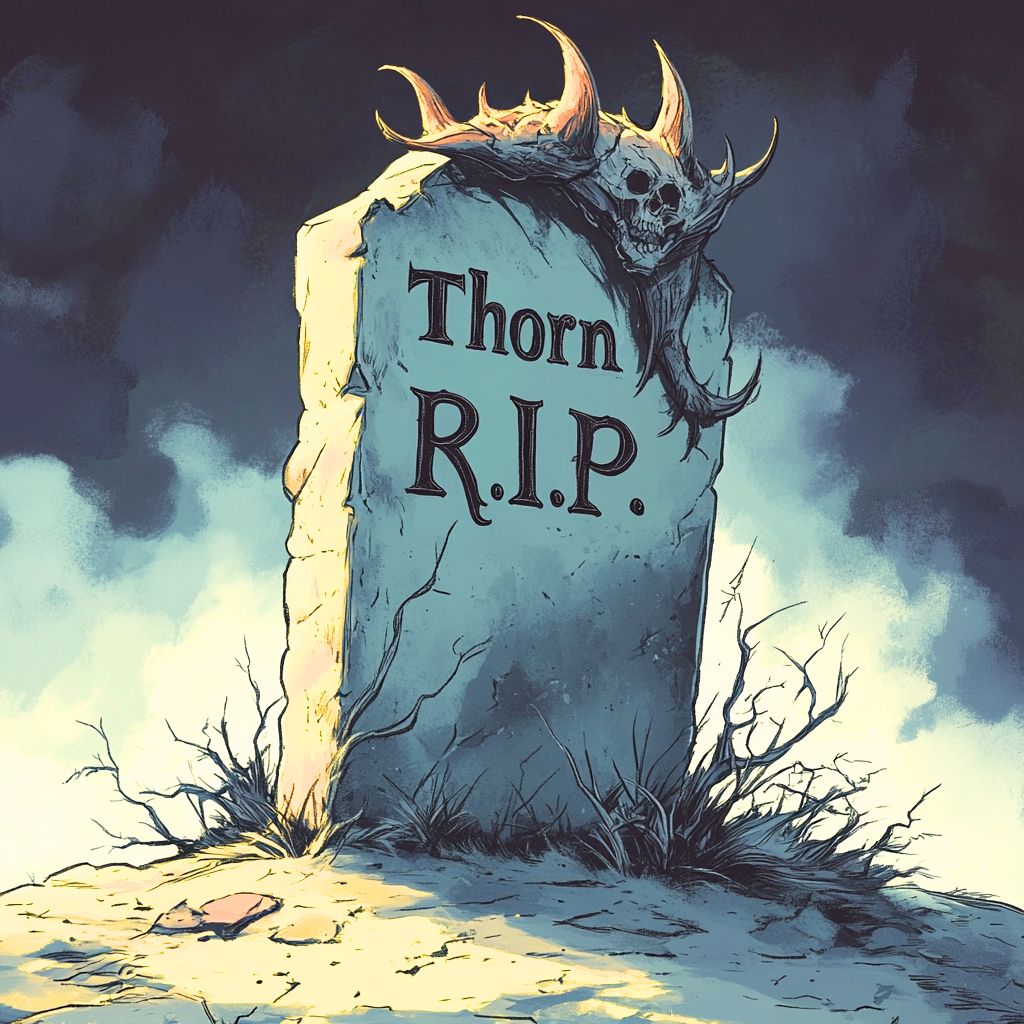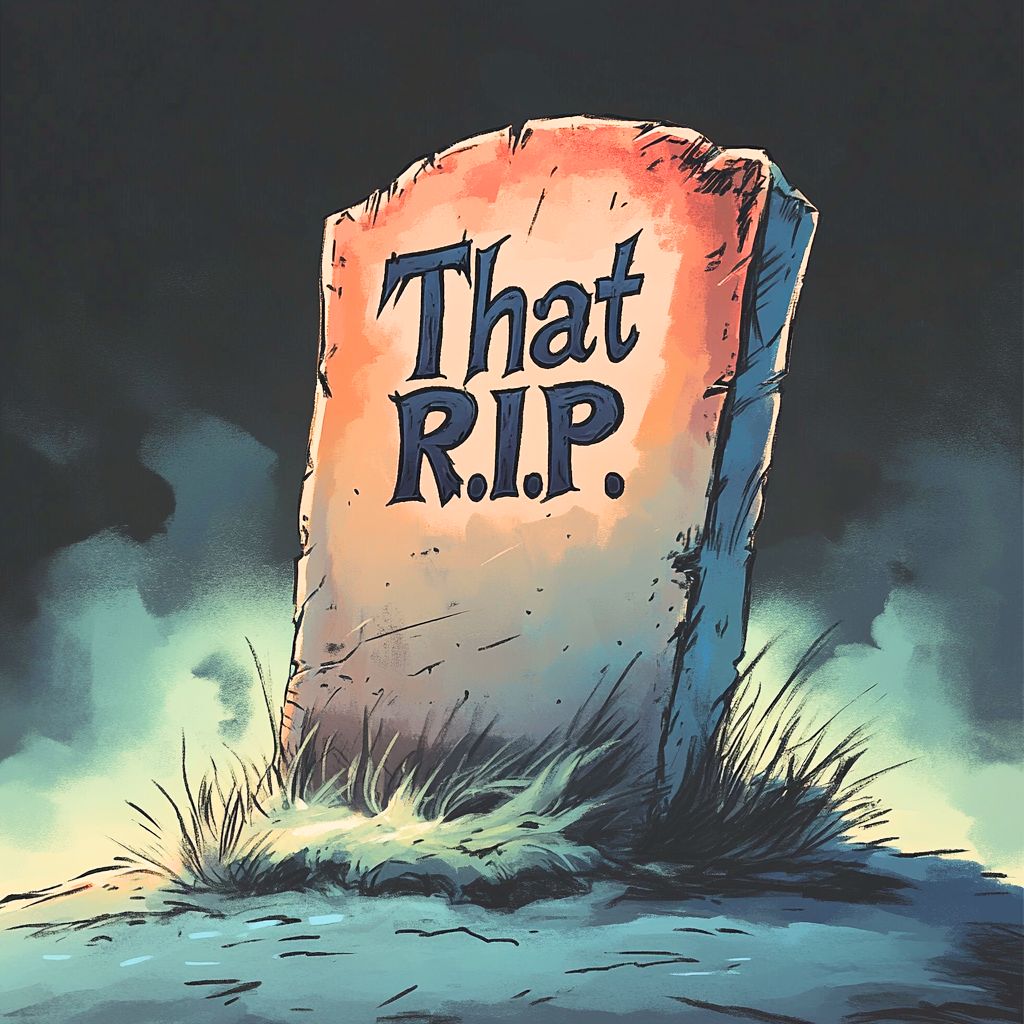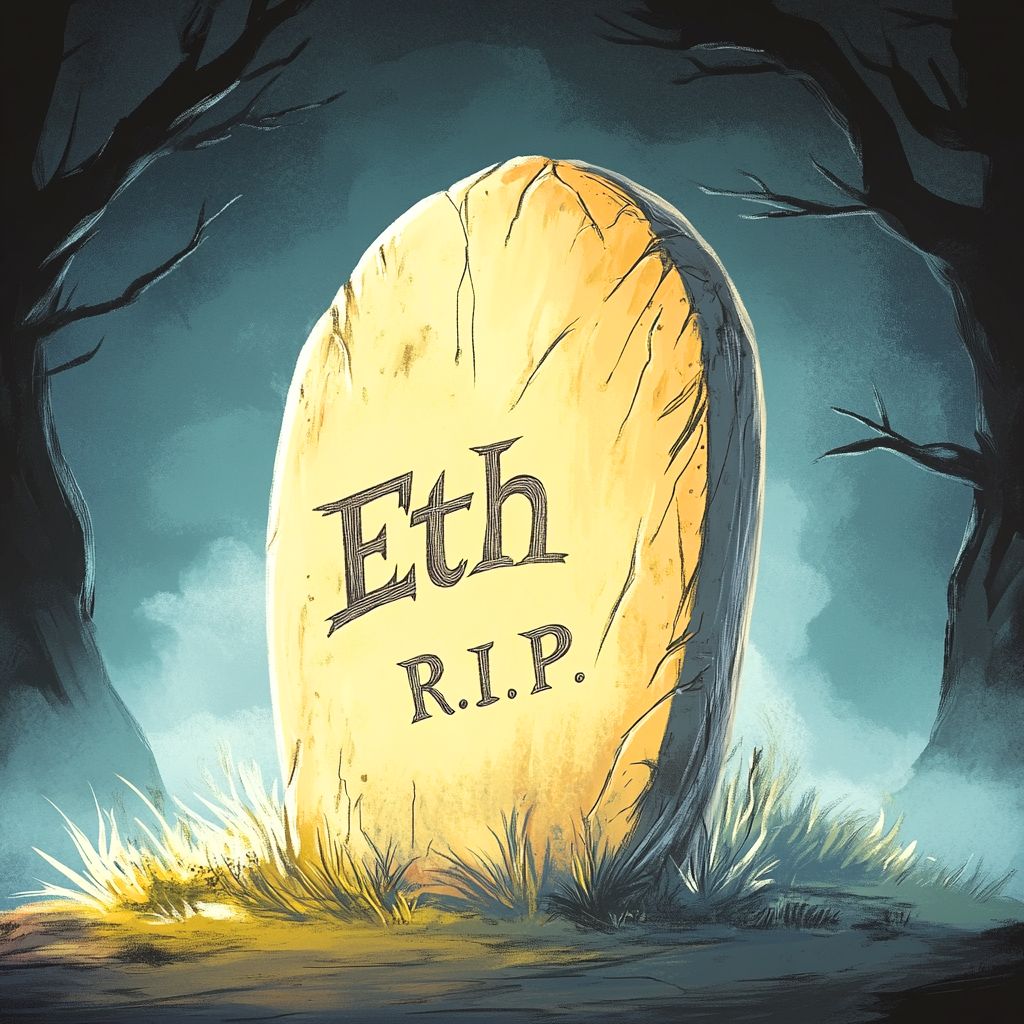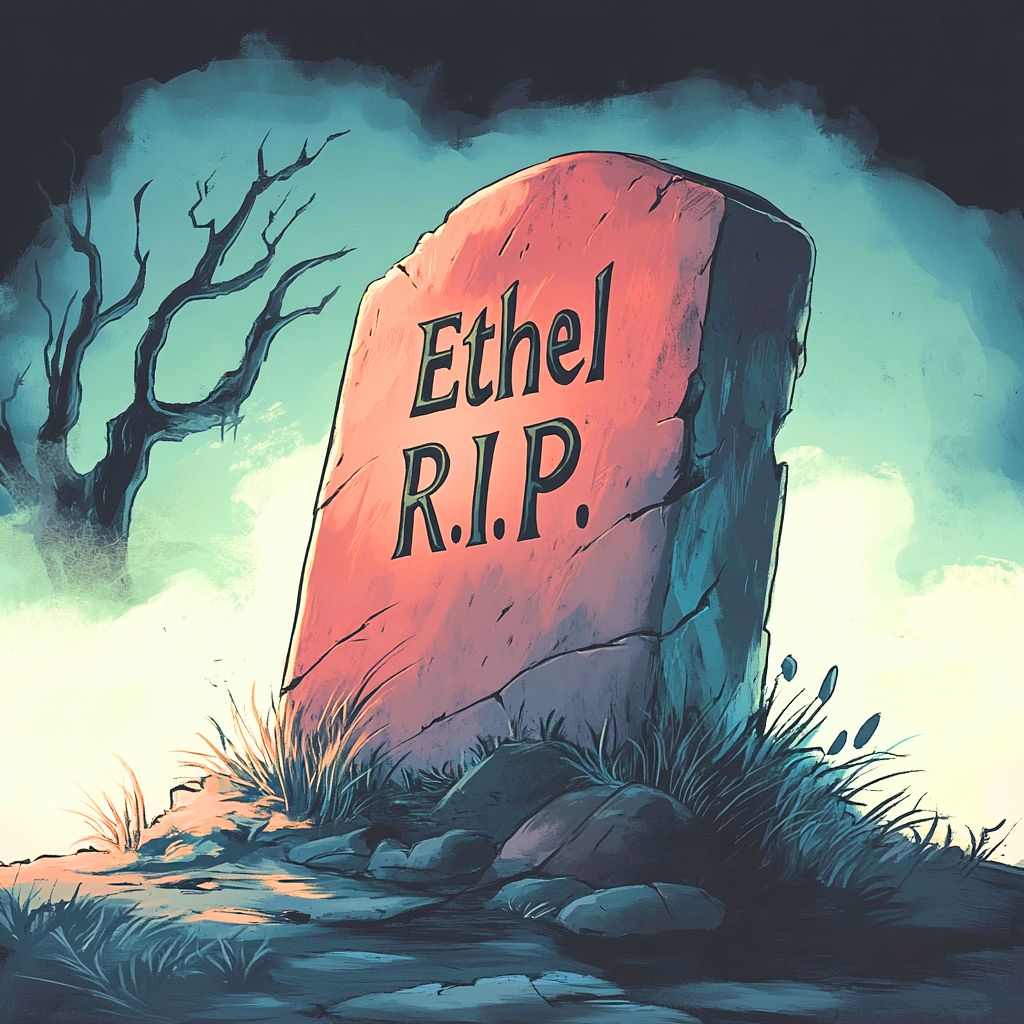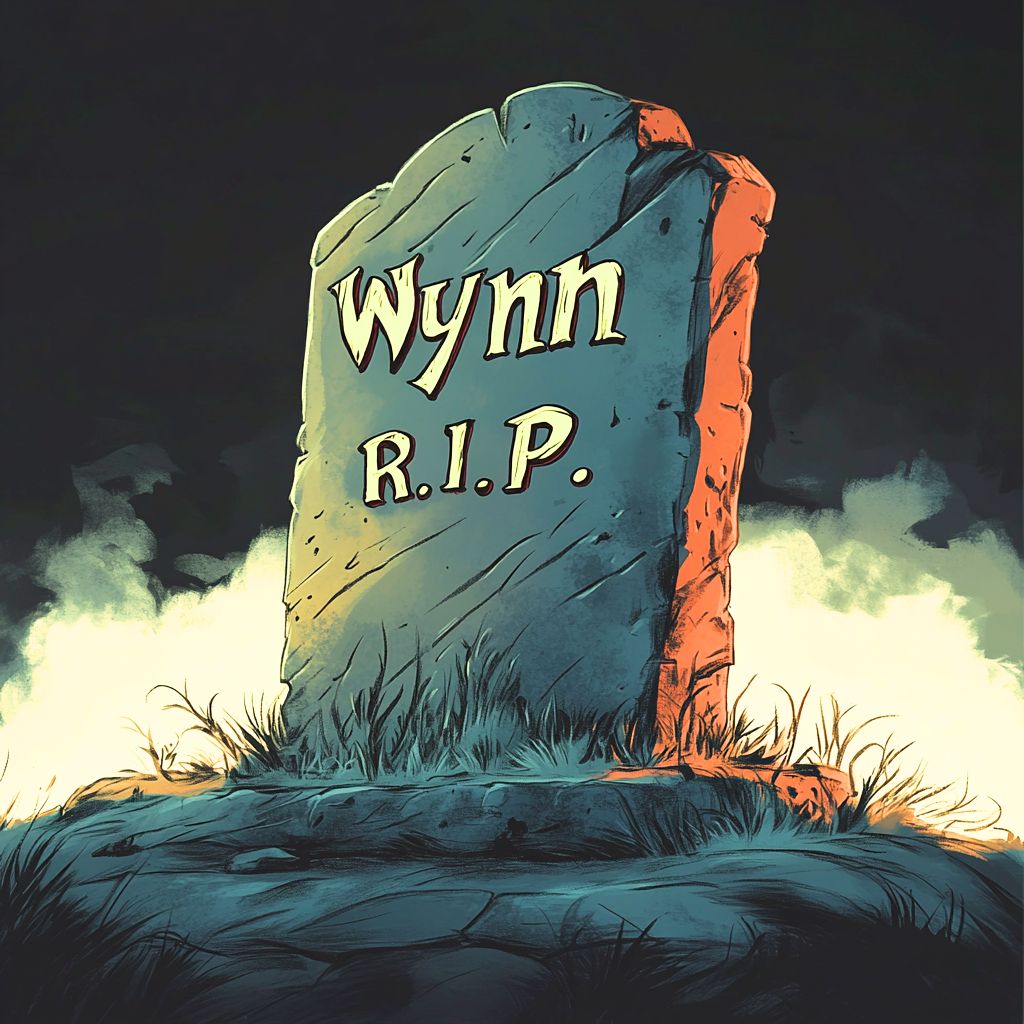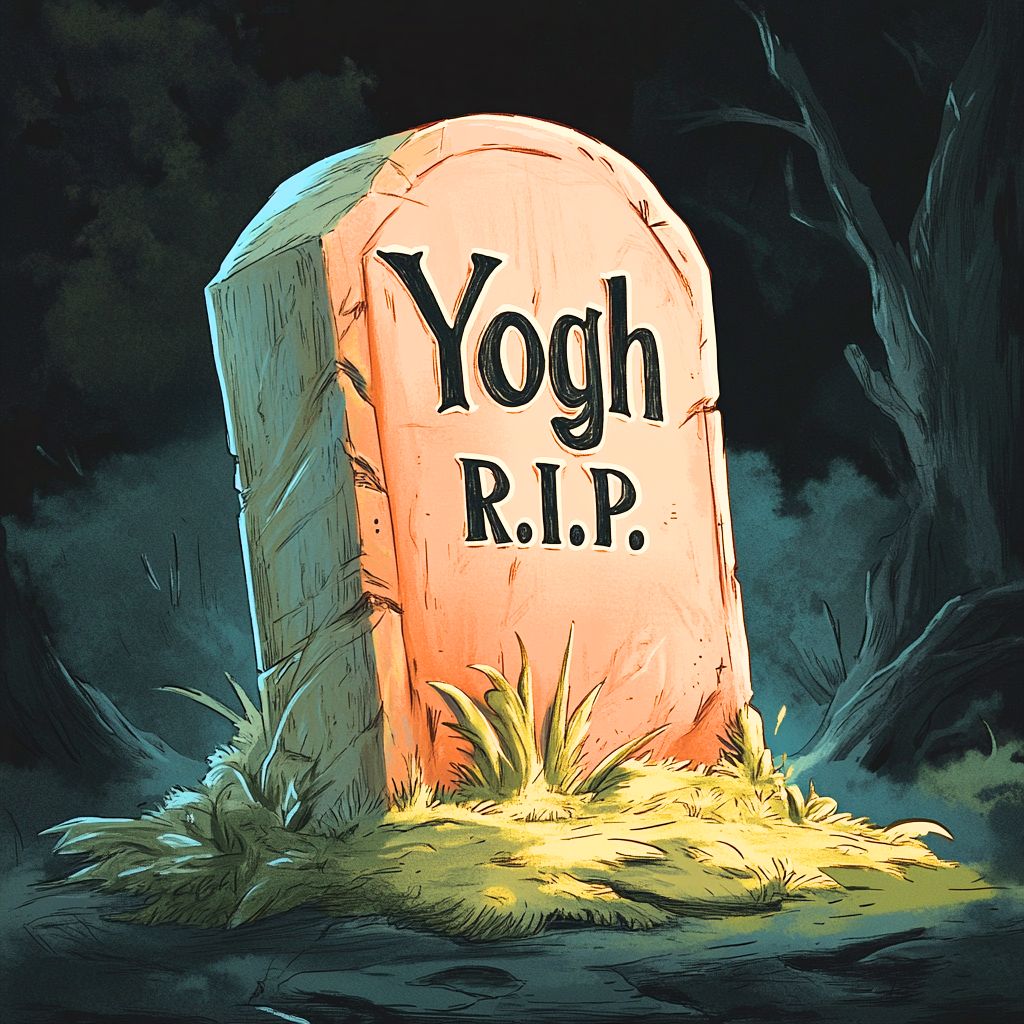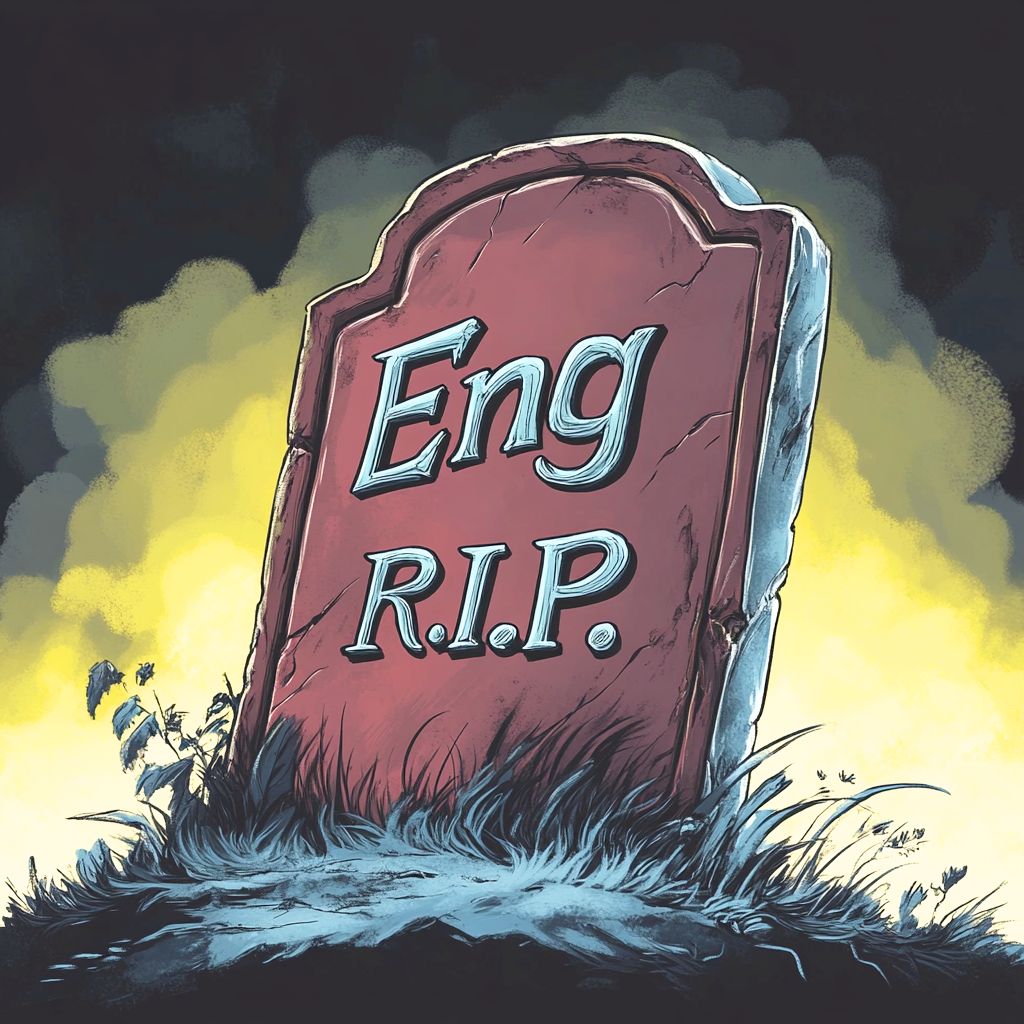Imagine a graveyard filled not with lost souls, but with letters that once roamed the English alphabet like rock stars of old. These forgotten characters, stars in their own right, have now been relegated to the dusty margins of history.
Based on the findings in AustinMcConnell’s video, we’re about to resurrect 10 of these neglected symbols that were once at the heart of written English. Get ready to meet some old “friends” that you never knew you had, because who says a trip to the graveyard can’t be a good time?
1. Long S (ſ): The Alphabet’s Fanciest ‘S’
First up is the Long S (ſ), the alphabet’s most misunderstood letter. Picture this: It’s the 1700s, and you’re reading a book, but every time you expect to see an “s,” there’s a funky “f” looking back at you.
That’s the Long S in action. It was supposed to appear at the beginning or middle of a word but never at the end. This letter had a personality crisis; it couldn’t decide if it wanted to be an “s” or something more “artsy.” It became infamous for causing confusion—was it “success” or “sufcefs”?
After a few hundred years of readers squinting at texts trying to decipher these peculiarities, the English language had enough. By the early 19th century, this stylistic nuisance got the boot.
The Long S had its moment of fame, but it was deemed too high-maintenance, becoming an overcomplicated casualty of alphabet reform. Now, it rests in peace with the other retired characters, occasionally surfacing to bewilder readers of ancient texts and inspire wannabe calligraphers.
2. Ampersand (&): The Letter That Turned Symbol
Next on our list is the Ampersand (&), a character that started life as a proper letter before it was demoted to mere punctuation.
Back in the day, the Ampersand was a respected member of the alphabet family. Children would even chant its name after “Z” while learning their ABCs. But, as language evolved, so did the alphabet, and the Ampersand was ousted from its position as a letter.
Its journey from letter to symbol was gradual but inevitable. Initially, it was seen as a practical and stylish way to represent “and” without writing three whole letters.
But as the English alphabet underwent standardization, the Ampersand was pushed out, considered more of a convenient shorthand than a legitimate letter. Yet, despite its demotion, the Ampersand refused to vanish.
It found new life in branding, logos, and text shorthand, showing up everywhere from company names to art prints. So, while it may rest in the graveyard of letters, it continues to haunt the written word in its own stylish, loopy way.
Also, the etymology of the Ampersand is extremely interesting. Sign up for our Free Newsletter to learn more about it and get ready to be amazed!
3. Thorn (Þ): The Sharp Sound of the Past
Next, we stumble upon Thorn (Þ), the medieval powerhouse of the English alphabet. Thorn wasn’t some decorative symbol; it was the hard-working letter that gave us the “th” sound in words like “the” and “thou.”
For centuries, Thorn did its job well, but when English began to get cozy with Latin-based printing presses, things got thorny. The Latin alphabet didn’t have a Thorn, so typesetters substituted it with a “y,” creating all those “Ye Olde” phrases we see on every faux-medieval shop sign today.
Despite being replaced, Thorn wasn’t entirely forgotten. It became a bit of a trickster, fooling generations into mispronouncing “Ye” when it was meant to be “The.”
While “thorn” has been replaced in English, it still thrives in the Icelandic language, proudly representing the “th” sound like a stubborn old knight refusing to retire. Thorn’s fall from grace reminds us that sometimes practicality beats originality when it comes to language evolution.
4. That (Ꝥ): The Medieval Texting Shortcut
Moving on, we find That (Ꝥ), a medieval attempt at shorthand for the word “that.” Think of it as the text message abbreviation of the Middle Ages. While Thorn handled the “th” sound, that added a stylish twist with a crossbar, making it distinct and quick for scribes who were tired of writing out whole words. Its popularity grew, especially in religious manuscripts where space was at a premium.
However, as English spelling began to standardize, the need for such shortcuts faded away. The letter couldn’t compete with the evolving language’s drive for simplicity. Despite its efficiency, That got axed from the alphabet, left behind as a relic of a time when writing was a craft. If you ever crack open an ancient text, don’t be surprised to spot this funky character hanging around, a reminder of when the alphabet had a bit more flair.
5. Eth (Ð): The Forgotten Fricative
Next in the graveyard of letters is Eth (Ð), Thorn’s often overshadowed sibling. While Thorn represented the unvoiced “th” as in “think,” Eth covered the voiced “th” sound found in words like “this” and “that.” It looked like a “D” with a line through it, giving it a distinct appearance, but it struggled to find a foothold in the alphabet’s hall of fame.
Unlike some other dead letters, Eth wasn’t purely ornamental. It served a clear phonetic purpose, distinguishing between the two “th” sounds.
However, as English spelling became more standardized and the digraph “th” took over all “th” duties, Eth fell by the wayside. It was one of the casualties of a more streamlined approach to writing.
Though it didn’t make it in the long run, Eth has not vanished entirely. It lives on in the International Phonetic Alphabet (IPA), still serving linguists and language enthusiasts who need a way to represent those subtle differences in sound.
It’s a reminder of a time when English was less afraid to play with unique characters. Eth may be gone from daily use, but its spirit remains among the phoneticians of today.
6. Ash (Æ): The Alphabet’s Odd Couple
Next in our dusty lineup is Ash (Æ), a fusion of “A” and “E” that tried to bridge the gap between two sounds. This character wasn’t just a quirky design choice; it was a legitimate letter in Old English, representing a sound in between “a” as in “cat” and “e” as in “bed.” Ash was often seen in words like “æther” or “archæology” and was common in Old English and other Germanic languages. However, as English evolved, the need for Ash dwindled.
By the time Modern English rolled around, Ash was seen as too niche—too “neither here nor there”—to justify its place in the alphabet. It slowly faded out of everyday use, surviving only in the archaic spellings of some specialized terms or in scholarly contexts. Yet, Ash still pops up occasionally in linguistic studies and certain loanwords, showing that while it may be buried as a regular letter, it’s not completely forgotten. Ash reminds us that English, like any language, is a bit of a patchwork quilt, full of experiments that didn’t quite stick.
7. Ethel (Œ): The Long-Lost Relative of “O” and “E”
Next up in our journey through the alphabet’s boneyard is Ethel (Œ), a letter that looks like a fancy ligature of “O” and “E.” Ethel was used to represent a long “e” sound in words of Greek or Latin origin, like “foetus” and “subpoena.” It had its heyday in Middle English and early Modern English, providing a sophisticated touch to certain words.
However, as spelling began to standardize and simplify, Ethel was slowly phased out. By the 19th century, Ethel had become more of a nuisance than a necessity. Modern English dropped it in favor of more straightforward spellings, leaving Ethel as an archaic oddity. Despite its demise in daily usage, Ethel still lingers in academic texts, medical terms, and certain stylized writings, like an eccentric relative who occasionally turns up at family gatherings with stories of the old days. While Ethel’s time in the spotlight may be over, its unique look and historic roots ensure it won’t be completely forgotten anytime soon.
8. Wynn (Ƿ): The Letter That Almost Was
Now we find Wynn (Ƿ), a letter that once fought for the “W” sound in English. Before “W” became the norm, English scribes didn’t have a dedicated character for this sound. They improvised by combining two “U”s or “V”s, but this looked awkward and was cumbersome to write. Enter Wynn, a single character designed to make writing faster and clearer.
Wynn enjoyed some popularity in Old English texts but couldn’t compete with the simplicity of just doubling up two “U”s (hence, “double-u”). Over time, the double “U” (which eventually evolved into the “W” we know today) won the battle. Wynn, with its unique design and efficiency, was cast aside. It remains a fascinating “what-if” of English, showing how even a practical idea can fall by the wayside when simplicity wins the day.
9. Yogh (Ȝ): The Letter with a Guttural Growl
Yogh (Ȝ) was one of the more interesting letters in the early English alphabet, bringing a guttural edge to the language. It represented sounds that are a mix between “y” and “gh,” commonly heard in Scottish words like “loch” or German names like “Bach.” Yogh looked similar to the number “3,” which often caused confusion. Over time, printers and scribes began to favor more straightforward combinations like “gh” to represent similar sounds, and Yogh was gradually phased out.
As Yogh disappeared, English adapted by turning many of these sounds silent or transforming them entirely. Words like “night” or “laugh” owe their bizarre spellings partly to Yogh’s departure. What remains of Yogh today is a ghost of its former self, seen in those silent “gh” pairs that haunt modern spelling. Its decline reminds us how changes in technology and practicality have shaped the quirks of English spelling, even leading to the extinction of some of its most unique letters.
10. Eng (Ŋ): The Letter That Never Quite Fit In
Finally, we have Eng (Ŋ), a letter designed to represent the “ng” sound in words like “sing” and “song.” Eng was proposed in the 17th century by scholars looking to streamline writing by replacing the cumbersome “ng” digraph. It seemed like a good idea in theory, but in practice, Eng faced challenges. Printers struggled to differentiate Eng from the regular “n” when the ink started to fade, and readers found it confusing.
Despite its potential to simplify, Eng never gained the traction it needed to become a staple of the English alphabet. As language evolved, it became clear that old habits die hard, and people were too accustomed to the “ng” combination to make the switch. Today, Eng survives mainly in phonetic alphabets and certain linguistic texts, a testament to an idea that, while sensible, just couldn’t break through the established norms of the time.
Rest in Alphabetical Peace
And there you have it—a guided tour through the crypt of forgotten English letters, each with its own rise and fall, from the misunderstood Long S to the almost-heroic Eng. Though these characters may be long buried, their stories remind us that language is full of twists, turns, and even a few dramatic exits. These letters might never make a comeback, but they left an indelible mark on our linguistic past. If they’ve taught us anything, it’s that even letters can have a wild ride before they rest in peace!

Hey fellow Linguaholics! It’s me, Marcel. I am the proud owner of linguaholic.com. Languages have always been my passion and I have studied Linguistics, Computational Linguistics and Sinology at the University of Zurich. It is my utmost pleasure to share with all of you guys what I know about languages and linguistics in general.

